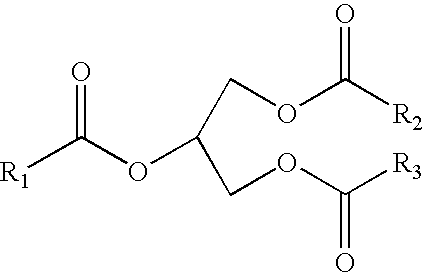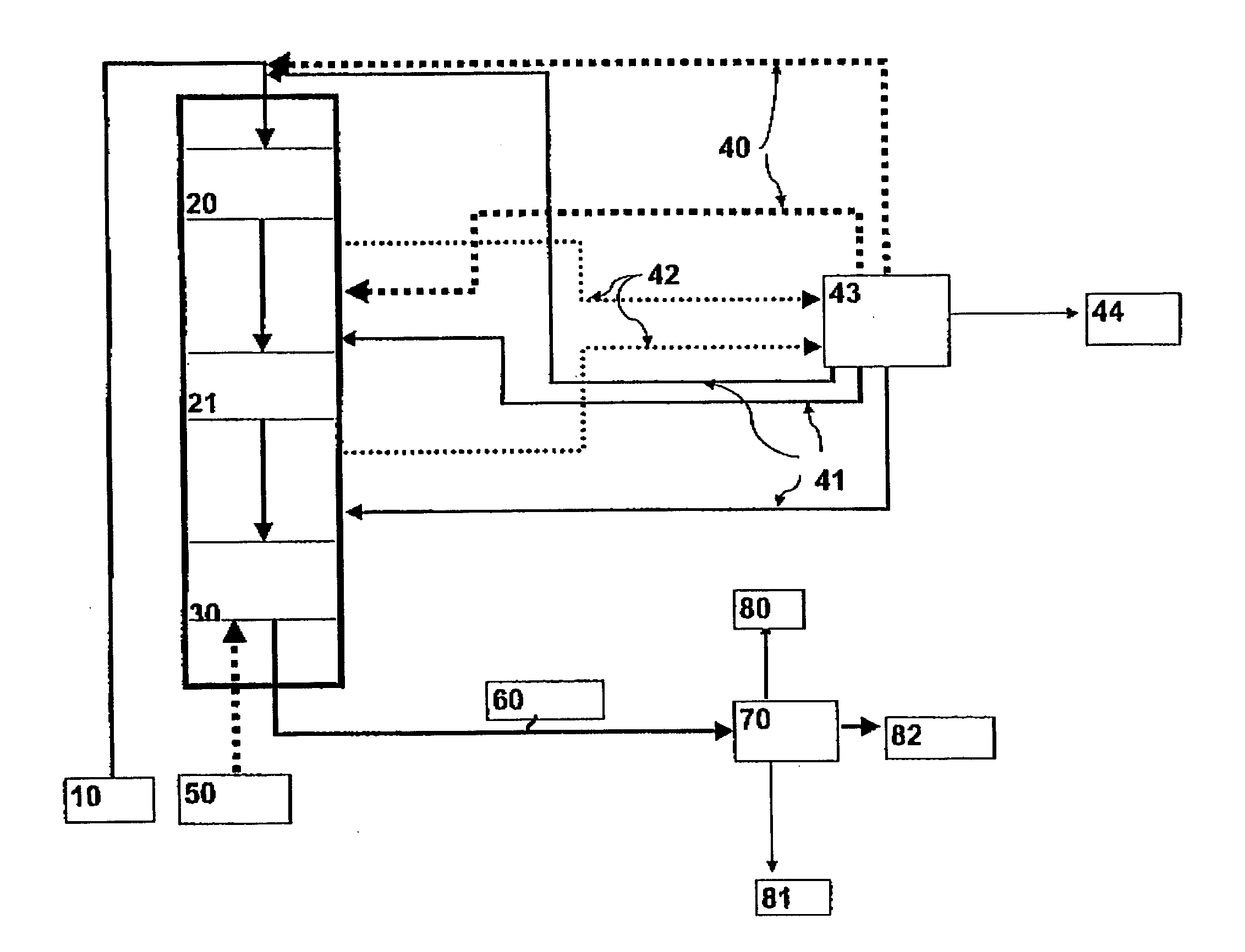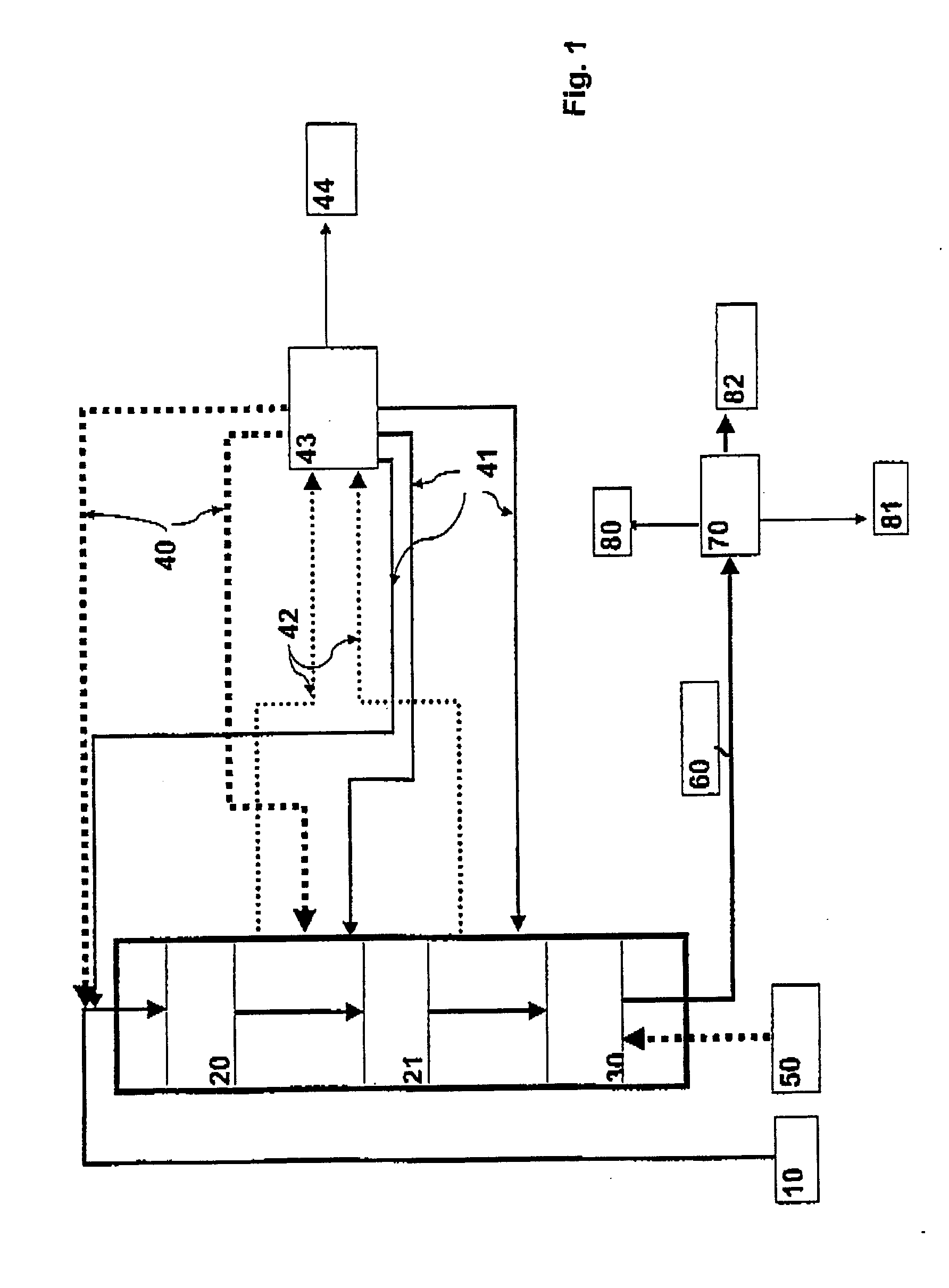Process for producing a hydrocarbon component of biological origin
a hydrocarbon component and biological technology, applied in the direction of hydrocarbon preparation, hydrocarbon oil treatment, liquid hydrocarbon mixture production, etc., can solve the problems of frequent regeneration, reduced service life of catalyst, and components that cannot be used at low temperatures, so as to shorten the operation period, reduce the side reaction of double bonds such as polymerization, ring formation and aromatization, and improve the yield of the final product (diesel).
- Summary
- Abstract
- Description
- Claims
- Application Information
AI Technical Summary
Benefits of technology
Problems solved by technology
Method used
Image
Examples
example 1
[0073] Production of a hydrocarbon component from tall oil fatty acid fraction (TOFA) using the process of the invention
[0074] TOFA was used as the feed stock, having the typical characteristics shown in Table 1 below.
1TABLE 1 TOFA (Tall Oil Fatty Acid) Property Numerical value Acid number 194 Saponification number 195 Resin acids 1.9% Unsaponified 2.4% Iodine number (Wijs) 152 Colour .degree. G 4-5 Density (20.degree. C.) 910 kg / m.sup.3 Refractive Index nD20 1.471 Fatty acid composition, % (typical) 16:0 0.4 17:0 ai 0.6 18:0 1.1 18:1 (9) 30.2 18:1 (11) 1.1 18:2 (5, 9) 1.0 18:2 (9, 12) 41.7 19:1 (9) ai 0.6 18:3 (5, 9, 12) 9.0 19:2 (5, 9) ai 0.3 19:2 (9, 12) ai 0.3 18:3 (9, 12, 15) 0.6 20:0 0.4 18:2 conjug. 5.5 18:3 conjug 2.1 20:2 (11, 14) 0.2 20:3 (5, 11, 14) 1.1 20:3 (7, 11, 14) 0.2 Others 3.6 Total 100.0
[0075] HDO Step
[0076] In the HDO step, the TOFA was hydrogenated using the typical desulphurization catalyst NiMo / Al.sub.2O.sub.3 of middle distillates. Aqueous phase formed in an...
example 2
[0081] Prehydrogenation according to the invention of alkali-refined rapeseed oil
[0082] Prehydrogenation were carried out in an autoclave at the temperature of 100-290.degree. C. and at the pressure of 30-35 bar. Alkali-refined rapeseed oil served as the feed stock. Table 3 shows some properties of the rapeseed oil feed and the prehydrogenated product. As may be seen from the properties of the prehydrogenated product, the triglyceride composition remains nearly unchanged (GPC=gel permeation chromatography) and the double bonds of the fatty acid chains are nearly completely saturated (iodine number).
3TABLE 3 Properties of the prehydrogenated product Rapeseed oil Prehydrogenated Prehydrogenated Analysis feed product / 150.degree. C. product / 250.degree. C. GPC analysis oligomers, % 0 0 0.2 triglycerides, % 97 95.9 94.9 diglycerides, % 2.3 3.1 3.5 monoglycerides, % 0 0 0 fatty acids or 0.7 0.9 1.3 hydrocarbons, % Iodine number 112 1 2
PUM
| Property | Measurement | Unit |
|---|---|---|
| temperature | aaaaa | aaaaa |
| temperature | aaaaa | aaaaa |
| temperature | aaaaa | aaaaa |
Abstract
Description
Claims
Application Information
 Login to View More
Login to View More - R&D
- Intellectual Property
- Life Sciences
- Materials
- Tech Scout
- Unparalleled Data Quality
- Higher Quality Content
- 60% Fewer Hallucinations
Browse by: Latest US Patents, China's latest patents, Technical Efficacy Thesaurus, Application Domain, Technology Topic, Popular Technical Reports.
© 2025 PatSnap. All rights reserved.Legal|Privacy policy|Modern Slavery Act Transparency Statement|Sitemap|About US| Contact US: help@patsnap.com



